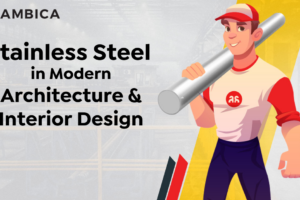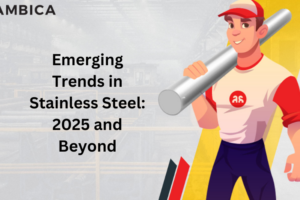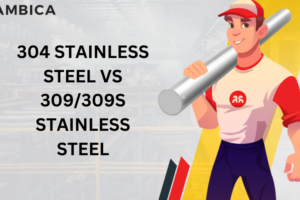Steel contributes its incredibility to engineering and construction. According to the World Steel Association, 1868.8 million tons of steel were produced for the year 2019. This amount represents an increase in production is almost double from the last decade. Steel has grown so far, it becomes a necessity for the construction and machine industry. To consider the fact, it is recyclable, without losing its qualities.
Steel is made up of iron and carbon. Iron exists in abundance in the crust of the earth. Carbon binds with iron and forms a strong molecular microstructure, which contributes hardness and tensile strength to steel.
Steel can be categorized based on its composition. Basically, four major groups are as follows:
- Carbon Steel
- Stainless Steel
- Tool Steel
- Alloy Steel
CARBON STEEL
Carbon is the principal alloy in carbon steel, i.e. 2% by weight. It also contains a minute quantity of alloying elements like manganese, silicon. Carbon Steel can be divided into 3 categories:
Low Carbon Steel
It contains 0.04% to 0.30% of carbon content, also known as mild steel. Low carbon content results in easy weld and cut. It is the most used carbon.
Medium Carbon Steel
It contains 0.31% to 0.60% of carbon. Medium Carbon is stronger than low carbon steel.
High Carbon Steel
It typically contains between 0.61% and 1.50% carbon. Its high carbon content makes it difficult to weld.
Mild carbons are more ductile than high carbon steels. On the other edge, High carbon steels offer hardness but lower ductile properties. Carbon steels are strong, cost-effective, and easily recyclable.
STAINLESS STEEL
Stainless steel is an alloy that offers excellent corrosion resistance. The main alloying elements include chromium, nickel, and molybdenum. The content of alloys varies in different grades; chromium holds a minimum of 11% by weight. The most common stainless steel grades are Ferritic, Austenitic, Martensitic, and Duplex stainless steel.
Stainless steel offers numerous applications because of its versatile properties. Various exceptional properties such as strength, corrosion resistance, formability, hardness, weldability, and heat resistance make stainless steel a preferential choice worldwide.
Stainless steel widely uses in commercial food processing equipment, kitchen utensils, chemical storage and manufacturing, surgical equipment, marine use, appliance, etc.
TOOL STEEL
Tool steel is an appropriate alloy to be made into tools, as its name indicates. Its aptness can be defined by its distinctive properties. Typically, Tool steels are hard, wear resistance, toughness, and hold their edge at elevated temperatures. Tool steel is a carbon alloy; its prime alloying elements are tungsten, chromium, vanadium, and molybdenum. These alloying agents form carbide and play a dominant role in attaining quality. Generally, tool steels are heat-treated to improve hardness.
There are 6 tool steel grades, according to its composition and properties:
- Water Hardening
- Air Hardening
- D Type
- Oil Hardening
- Shock resisting types
- Hot-Working
Tool steels are extremely hard; its resistance to abrasion and ability to undergo stress makes it useful in various industries. It is commonly used to make knives, stamps, cutting, hammer, etc.
ALLOY STEEL
When carbon steel is alloyed with one or more metal, alloy steel is formed. Their alloying metals are manganese, silicon, nickel, titanium, copper, chromium, and aluminum. The different proportional amalgamations provide improved hardness, superior corrosion resistance, improved formability, weldability, and increased strength.
Varying alloy composition leads to form a broad application range. Hundreds of products can be manufactured with alloy steel. Alloy steel is used in various industries such as automobiles, mining, railways, machinery, etc.
To conclude, Steel is the most versatile valuable source of the economy worldwide. Its eminent attributes make it significantly sustainable. In addition, it has an infinitely recyclable character and strength contributes to its utilization in every industrial sector.




